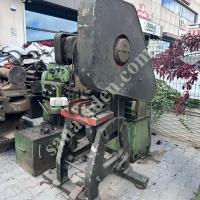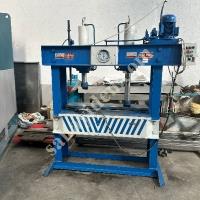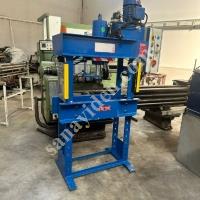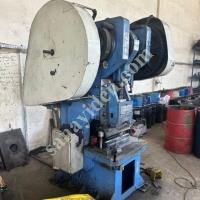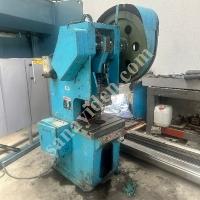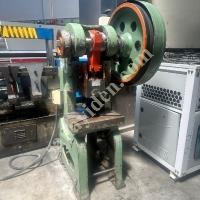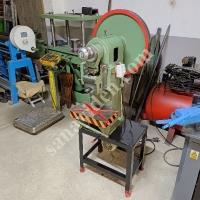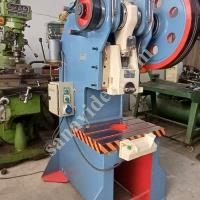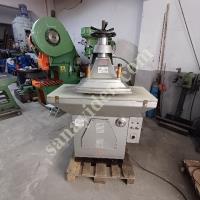
Hydraulic presses are an excellent tool for pressing fabric, paper and other materials.
Introduction: Hydraulic presses are a staple in the fabric and paper processing industry. They are great for pressing both heavy and thin materials and can tackle a wide variety of tasks. In this article, we'll take a closer look at how hydraulic presses can help your business.
Section entry.
1. Introduction to Hydraulic Presses
2. Types of Hydraulic Presses
3. Different Uses For Hydraulic Presses
4. hydraulic presses: Pros and Cons
5. How to Choose the Right Hydraulic Press
6. The 3 Best Hydraulic Presses for Your Needs
7. hydraulic presses: Tips and Suggestions
Hydraulic presses are an excellent tool for pressing fabric, paper and other materials.
A hydraulic press is a machine that uses hydraulics to press materials. The principle behind hydraulics is the same as that of a piston: water or another liquid is forced through a large hole, pushing and pulling material through the machine.
Hydraulic presses are typically used to press fabric, paper, plastic, wood and other materials. They can be used for a variety of applications including manufacturing, packaging and shipping.
subsection 1.2 What kinds of materials can be pressed with a hydraulic press?
The most common type of material that can be pressed with a hydraulic press is fabric. Other common materials that can be hydraulically pressed include paper, plastic, wood and metal. However, there are many different types of hydraulic presses that cater to different applications and needs. Consult an experienced installer or a resource such as Julie's Technology Guidebook (https://www.amazon.com/gp/product/B00J4Y1HWO) for more information on the type of hydraulic press best suited for your needs.
subsection 1.3 How the Hydraulic Press Works:
The hydraulic press works using hydraulics to push and pull material through the machine. The principle behind hydraulics is the same as that of a piston: water or another liquid is forced through a large hole, pushing and pulling material through the machine. Pressing materials this way provides greater flexibility when it comes to forming them into desired shapes or sizes. In addition, the pressure exerted by pressing machines can often be controlled to achieve certain results, such as high quality printing or quality printing conditions. Consult an experienced installer or a resource such as Julie's Technology Guidebook (https://www.amazon.com/gp/product/B00J4Y1HWO) for more information on how the hydraulic press works.
Benefits of Pressing Material with Hydraulic Press.
Hydraulic presses are an excellent tool for pressing fabric, paper and other materials. They can provide powerful and lasting results with very little effort. Additionally, they are generally easy to use and can be used in many different ways.
Subsection 2.2 Benefits of Hydraulic Press Materials.
The benefits of using hydraulic press materials range from less wear and tear on equipment to higher productivity. In addition, many hydraulic press products have features that make them ideal for a variety of applications such as fabric pressing, paper cutting and welding. Subsection 2.3 Benefits of Using a Hydraulic Press.
One of the best things about using a hydraulic press is that it can easily process large quantities of material at the same time. This makes it perfect for handling large batches of fabric or paper quickly and efficiently. Additionally, using a hydraulic press can save you time and money when repairing or modifying your equipment.
Tips for Pressing Material with Hydraulic Press.
3.1. Use the Hydraulic Press Correctly
When using a hydraulic press, be sure to use it correctly. To press the material with the hydraulic press, you must place the material on top of the pedal and pump the lever up until the material is pressed against the pedal. This action causes the water pressure inside the press to increase, making it possible to crush or push materials down.
3.2. Practice Before Using the Press
Before using your hydraulic press, practice pressing the material against different surfaces to learn how it feels and sounds. Try pressing objects such as paper, fabric, or plastic until they are firmly pressed together.
3.3. Good PRINTING techniques
When using a hydraulic press, use good pressing techniques to ensure your presses produce consistent results every time. follows these tips:
- Place your object on top of the pedal and pump the lever up until you feel pressure being applied
- Pumping too much or too little will cause different types of distortion that can affect the way the materials are pressed. Try applying a moderate amount of pressure and holding for about 5 seconds before releasing the handle.
- Make sure you have a good understanding of the size and shape of your object before putting it together.
- Use a circular motion instead of straight punches or darts when pressing material
conclusion
with hydraulic press












